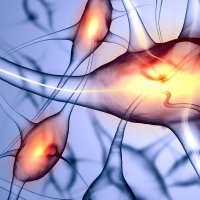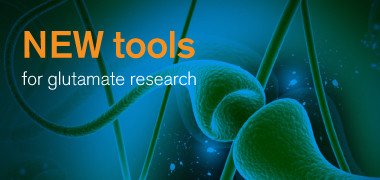DREADDs for studying GPCR signaling
GPCRs can be modified so that they only respond to a specific biologically inert chemical (a designer drug). These modified GPCRs are called Designer Receptors Exclusively Activated by Designer Drugs or “DREADDs”. Cells expressing the DREADD respond robustly to low concentrations of the designer molecule, whereas cells that do not express DREADD are unresponsive to the designer drug. DREADDs are functionally similar to their wild type receptors, therefore they are exciting tools for the study of GPCR signaling.
View the full range of DREADDs ligands available from Hello Bio.
What are the advantages of DREADDs?
- You can selectively control different signaling pathways in neurons: depending on the DREADD you choose, you can precisely control Gq, Gi or Gs-signaling pathways.
- DREADDs and the designer drugs are non-toxic: After expressing DREADDs you can use the corresponding designer drug to modify the activity of neurons over days or months whilst keeping the neurons healthy.
- Using DREADDs and corresponding designer drugs allows you to modify neuronal activity non-invasively in in vivo models. A brain permeant designer drug can be administered peripherally (by injection, or orally for example) - it can then cross the blood-brain barrier to activate DREADD-expressing neurons.
A unique range of DREADD ligands available from Hello Bio
There is a growing number of ligands that can be used to activate DREADDs, including certain water-soluble ligands, that are currently only available from Hello Bio.
CNO is the prototypical DREADD activator. CNO activates the excitatory Gq- coupled DREADDs: hM3Dq, hM1Dq and hM5Dq (pEC50 values are 7.26 and 8.61 at hM3Dq and hM1Dq respectively) and also the inhibitory hM4Di and hM2Di Gi-coupled DREADDs (pEC50 = 6.89 at hM4Di). CNO also activates the Gs-coupled DREADD (GsD) and the β-arrestin preferring DREADD: rM3Darr (Rq(R165L).
Hello Bio offers water-soluble CNO dihydrochloride, which is highly advantageous for use in biological assays, and the freebase version of CNO (which is also water-soluble, but more difficult to handle in solution). For researchers wishing to use these tools, we have published the following technical reviews offering practical advice for the use of these DREADD ligands in the lab:- Stability of Water-Soluble DREADD Ligands in Solution: A Technical Review
- CNO (freebase) - a technical review on stability, solubility and use in the lab
Recent findings suggest that systemically administered CNO does not readily cross the blood-brain-barrier in vivo and converts to CLZ which itself activates DREADDs. CLZ (also available as water-soluble CLZ dihydrochloride) is an atypical antipsychotic which has been indicated to show high DREADD (hM3Dq and hM4Di) affinity and potency. Subthreshold injections of CLZ itself can be utilised to induce preferential DREADD-mediated behaviors. Therefore when using CNO, care must be taken in experimental design and proper controls should be incorporated.
DREADD agonist 2 (Compound 21) (DREADD agonist 21), represents an alternative chemogenetic actuator for muscarinic -based DREADDs and an alternative to CNO for in vivo studies in which metabolic conversion of CNO to CLZ is an issue. DREADD agonist 21 (Compound 21) is a potent and selective agonist at muscarinic based DREADDs such as the excitatory hM3Dq, hM1Dq and inhibitory hM4Di DREADDs (pEC50 values are 8.48, 8.91 and 7.77 at hM3Dq, hM1Dq and hM4Di respectively). DREADD agonist 21 (Compound 21) has excellent bioavailability, pharmacokinetic properties and brain penetrability and does not undergo back metabolism to CLZ. A water soluble dihydrochloride salt of DREADD agonist 21 (Compound 21) is now also commercially available from Hello Bio.
In a recent publication by Nagai et al, a novel, potent, metabolically stable and fast acting DREADD ligand DCZ has been described. This hM3Dq and hM4Di muscarinic DREADD actuator has applications in vivo and is now also available exclusively from Hello Bio in water-soluble form (DCZ dihydrochloride).
Another activator of Gq-, Gi-, and Gs DREADDs that has structural similarity to CNO is perlapine, a drug already approved for treating insomnia in Japan. Perlapine is a potent agonist at muscarinic based DREADDs such as the excitatory hM3Dq, hM1Dq and inhibitory hM4Di DREADDs (pEC50 values are 8.08, 8.38 and 7.27 at hM3Dq, hM1Dq and hM4Di respectively). It has been reported that perlapine does not undergo back metabolism to CLZ. A water soluble dihydrochloride salt is now commercially available from Hello Bio.
Salvinorin B is a brain penetrant, potent and selective activator of κ-opioid DREADD (KORD) (EC50 = 11.8 nM). It is selective for KORD over the endogenous κ opioid receptor and other related targets. In KORD-expressing mouse models it induces neuronal hyperpolarization, and modifies locomotor activity and feeding behavior. However, it displays no ataxic or analgesic effects in wild type mice. View Datasheet for salvinorin B.
Recently, the first peripherally restricted DREADD (HCAD DREADD), which is activated by FCH-2996413 (Peripherally restricted HCAD DREADD actuator) was introduced. This novel DREADD ligand does not cross the BBB and can activate the HCAD system for precise study of peripheral physiology without CNS interference.
Hello Bio has also introduced JHU37160 dihydrochloride and JHU37152 dihydrochloride - novel DREADD ligands, active in vivo, with high potency and affinity for hM3Dq and hM4Di DREADDs. Read more about these novel DREADD ligands
View the full range of DREADDs ligands available from Hello Bio.
Find out more with our DREADD review and exclusive technical guides
Read our latest mini-review on DREADDs. Written by our expert PhD qualified technical team, and endorsed by our Scientific Advisory Board, this mini-review summarizes some of the features of DREADDs and their ligands.
We have also published these technical guides to offer practical advice on using DREADDs ligands in the lab:
- Stability of Water-Soluble DREADD Ligands in Solution: A Technical Review
- CNO (freebase) - a technical review on stability, solubility and use in the lab
Featured DREADD related products
Cmpd101 is a novel, potent and selective G-protein coupled receptor kinase 2 and 3 (GRK2/GRK3) inhibitor (IC50 values are 35, 290 nM and 125 µM at GRK2, GRK3 and GRK5 respectively). It shows little activity at a broad range of other kinases. Membrane permeable, it can be used to study the roles of GRK2/3 in GPCR desensitization and other functions. Find out more…
ACh muscarinic receptor ligandsOur growing range agonists and antagonists for the muscarinic receptor include M1 allosteric agonist VU 0357017 and M2 antagonist AF-DX 116
Pharmacologically Selective Effector Molecules (PSEMs) are inert ligands, specific for genetically-modified, chimeric ion channels. PSAMs containing the 5-HT3 ion pore domain allow activation of neuronal activity, and low cost uPSEM817 tartrate and uPSEM792 hydrochloride are available.









